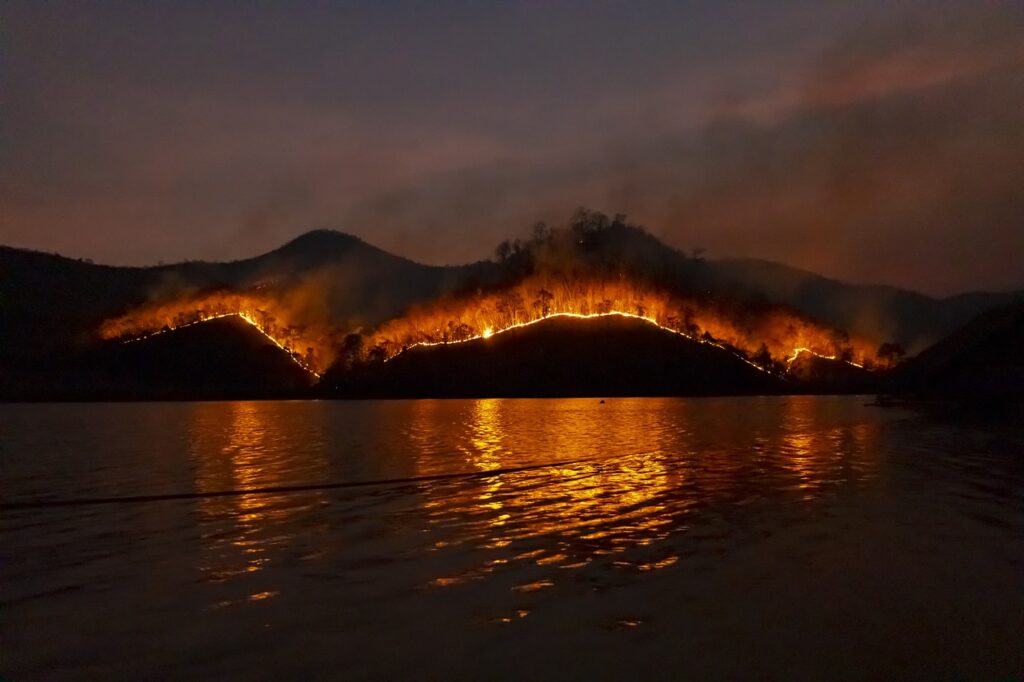
The term “wildland fire” is a more general term for wildfires that are intentionally set as part of a prescribed burn. A prescribed or controlled burn is a fire purposely set to help manage and control certain areas of land. The term prescribed burn comes from the fact that land managers require a “prescription” to be fulfilled before a fire can be started. This includes the right conditions such as temperature, wind, weather, and the designation of a specific area. These requirements need to be met to ensure the effectiveness of the burn while making sure these man-made fires can be properly contained and managed while burning. The management of the land through prescribed fires supports the needs of the land and the organisms living there by removing invasive plants and ensuring room for the growth of smaller and younger plants that provide food for animals and a reduced understory.
While the term wildfire often comes with a negative connotation, wildfires in some ecosystems are necessary to maintain the health of the ecosystem. This may seem counterintuitive since wildfires cause destruction. Organisms in certain ecosystems will rely on fire to help them grow and develop and even continue their lifecycle. Without prescribed or natural burns, there could be a buildup of natural materials (dead or decaying organisms) which could prevent organisms in the soil from accessing these necessary nutrients or block plants and animals from accessing the soil underneath. Fires help to remove and even prevent build-up from occurring when they occur regularly in an ecosystem. The removal of undergrowth can also prevent out-of-control wildfires that can cause a major disaster.
Fire has always been a natural occurrence in the Everglades. These naturally occurring fires from lightning strikes also helped to shape the landscape here in South Florida. These wildfires helped to stimulate plant growth and flowering of the native landscape after a burn occurred. The native Americans and pioneers in these areas used fires for centuries and understood the benefits they had on the vegetation and wildlife. Today, a fire management plan is put in place for the Everglades National Park to help ensure the management and survival of this national park. This plan includes the use of prescribed fires to “help reduce the risk of wildfire impacts on cultural resources, park infrastructure, and the surrounding communities” while also “allow[ing] [Everglades National Park Division of Fire and Aviation staff] to manage smoke impacts outside the boundaries of the Park’s fire-dependent ecosystem” according to the National Park Service’s page on fire operations in Everglades National Park.
The Ecological Benefits of Fire (nationalgeographic.org)
Why We Work With Fire | The Nature Conservancy
Wildland Fire: What is a Prescribed Fire? (U.S. National Park Service) (nps.gov)
Wildland Fire – Everglades National Park (U.S. National Park Service) (nps.gov)
